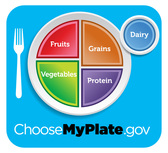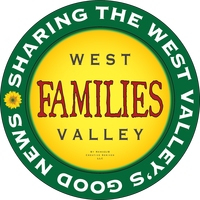What's for Lunch?
October 22, 2014

Jen's Note: What is "pink slime?" The pros and critics refer to it as 'finely textured beef.' Your Dictionary defines it as "finely ground beef scraps, fat and tissue that have been made into a protein paste and treated to kill bacteria, to become a meat additive that is added into ground beef and processed meats as filler."
In 2012, parents across the country were in an uproar over the lean textured beef because of it's seemingly unnatural bright pink appearance. Public schools were among those scrapping the product from its menus... including here in Arizona.
On August 3, 2012, The Arizona Republic reported the controversial meat would no longer be ordered by the Arizona Department of Education for school districts. I was surprised to read just a year later, though, the Huffington Post reporting several states were bringing the pink back.
So what's happening here in Arizona? I thought I'd ask. I did. Additionally, I wanted to know if the state's nutrition guidelines are linked to First Lady Michelle Obama's Let's Move initiative. And does the department take childhood obesity into consideration when planning school lunches?
While it took two weeks to get a response, I'm very grateful the state answered each question. I'm hoping the additional information provided in the state's answers can help parents, too.
A special "thank you" to Cara Peczkowski, RD, SNS for these responses. She is the School Nutrition Programs Co-Director for the Arizona Department of Education.
In 2012, parents across the country were in an uproar over the lean textured beef because of it's seemingly unnatural bright pink appearance. Public schools were among those scrapping the product from its menus... including here in Arizona.
On August 3, 2012, The Arizona Republic reported the controversial meat would no longer be ordered by the Arizona Department of Education for school districts. I was surprised to read just a year later, though, the Huffington Post reporting several states were bringing the pink back.
So what's happening here in Arizona? I thought I'd ask. I did. Additionally, I wanted to know if the state's nutrition guidelines are linked to First Lady Michelle Obama's Let's Move initiative. And does the department take childhood obesity into consideration when planning school lunches?
While it took two weeks to get a response, I'm very grateful the state answered each question. I'm hoping the additional information provided in the state's answers can help parents, too.
A special "thank you" to Cara Peczkowski, RD, SNS for these responses. She is the School Nutrition Programs Co-Director for the Arizona Department of Education.

Q. Please explain the National School Lunch Program and how it's implemented in Arizona.
A. Please see the fact sheet from the USDA. (It is linked here.)
In Arizona, the NSLP is operated in over 1800 sites, which include schools, residential child care institutions, and juvenile detention centers.
Q. Is this program associated with Let's Move and has it received any feedback - good or bad - from students or parents?
A. Let's Move is a comprehensive initiative launched by First Lady, Michelle Obama. It is associated with USDA programs but not tied directly to the NSLP.
Arizona Farm to School is one of the initiatives that we focus on in the federally funded, National School Lunch Program -- sometimes parents/teachers/other community members leave comments on our Arizona Farm to School Facebook page as to why they like about this program. We also have a Health and Nutrition focused social media site under the title “HealthologyAZ.”
Q. Does your department work directly with West Valley school districts in setting up monthly menus? (Is there anything unique about lunches in the West Valley?)
A. Not really—our department provides support (resources online, provides training classes) and oversight (we conduct on-site reviews of program operations) for the NSLP but the districts are responsible for creating their own menus. Over the past two more than 75% of Local Educational Agencies in the Arizona who operate the NSLP, have submitted menus to our department (Health and Nutrition Services) in order to become Menu Certified. Once certified, they receive an additional six cents per lunch served to students. The menus submitted were found to be in compliance with USDA’s new meal pattern requirements: http://www.azed.gov/health-nutrition/meal-pattern/ --- we have offered menu planning training as a means to help foodservice adhere to/meet the New Meal Pattern Guidelines, however, we don’t directly plan menus for Districts, that authority is not ours.
Litchfield Elementary District has been a pioneer for others in the farm to school movement in Arizona. Other like Deer Valley and Peoria are interested in buying locally grown food and have made efforts to purchase more in the future. You can read more about district’s in Arizona and their farm to school efforts at the USDA Farm to School Census.
Q. What are the top priorities when considering what types of foods to offer children at lunch?
A. 1. Cost/ price points
2. New Meal Pattern Regulations (healthy)
3. What do students enjoy eating/ food culture
4. Student allergies/ special diets
Q. In August 2012, the controversial bright pink filler nicknamed "mystery meat" or "pink slime" had parents in an uproar across the country. It appears the Arizona Department of Education stopped ordering the textured beef. Has the beef, containing the pink additive, been reintroduced in public school lunches?
A. It was taken out in 2012 and was never reintroduced. We have attached information about this.
A. Please see the fact sheet from the USDA. (It is linked here.)
In Arizona, the NSLP is operated in over 1800 sites, which include schools, residential child care institutions, and juvenile detention centers.
Q. Is this program associated with Let's Move and has it received any feedback - good or bad - from students or parents?
A. Let's Move is a comprehensive initiative launched by First Lady, Michelle Obama. It is associated with USDA programs but not tied directly to the NSLP.
Arizona Farm to School is one of the initiatives that we focus on in the federally funded, National School Lunch Program -- sometimes parents/teachers/other community members leave comments on our Arizona Farm to School Facebook page as to why they like about this program. We also have a Health and Nutrition focused social media site under the title “HealthologyAZ.”
Q. Does your department work directly with West Valley school districts in setting up monthly menus? (Is there anything unique about lunches in the West Valley?)
A. Not really—our department provides support (resources online, provides training classes) and oversight (we conduct on-site reviews of program operations) for the NSLP but the districts are responsible for creating their own menus. Over the past two more than 75% of Local Educational Agencies in the Arizona who operate the NSLP, have submitted menus to our department (Health and Nutrition Services) in order to become Menu Certified. Once certified, they receive an additional six cents per lunch served to students. The menus submitted were found to be in compliance with USDA’s new meal pattern requirements: http://www.azed.gov/health-nutrition/meal-pattern/ --- we have offered menu planning training as a means to help foodservice adhere to/meet the New Meal Pattern Guidelines, however, we don’t directly plan menus for Districts, that authority is not ours.
Litchfield Elementary District has been a pioneer for others in the farm to school movement in Arizona. Other like Deer Valley and Peoria are interested in buying locally grown food and have made efforts to purchase more in the future. You can read more about district’s in Arizona and their farm to school efforts at the USDA Farm to School Census.
Q. What are the top priorities when considering what types of foods to offer children at lunch?
A. 1. Cost/ price points
2. New Meal Pattern Regulations (healthy)
3. What do students enjoy eating/ food culture
4. Student allergies/ special diets
Q. In August 2012, the controversial bright pink filler nicknamed "mystery meat" or "pink slime" had parents in an uproar across the country. It appears the Arizona Department of Education stopped ordering the textured beef. Has the beef, containing the pink additive, been reintroduced in public school lunches?
A. It was taken out in 2012 and was never reintroduced. We have attached information about this.
|
Attached information about lean textured beef can be found here. |
| |||

Q. Where do the foods come from? Are they shipped in? Do they come from Arizona? Do you work with any local farmers for fresh fruits and veggies?
A. Schools receive food from a multitude of places --- if they are the National School Program and on the USDA Foods Program they have access to 180 healthy foods as designated by USDA -- whole grain pasta and flour, low sodium and low fat cheese, canned fruit with light syrup, low sodium canned vegetables, frozen vegetable, Greek yogurt, lean meats -- we list these out on our website under “USDA Food Calendars” USDA works with our Department of Defense Fresh Produce Program to offer free fruits and vegetable to our schools -- you can see a our Trends in local Purchasing Report from 2012-2013, which indicates what schools have purchased ‘locally” (Arizona grown) verses “Conus” (American grown).
Our School Food Programs unit here at ADE/HNS piloted one locally grown item direct from one of our west valley farms (Dunkin Family Farms) to be offered through the Department of Defense (DoD) Fresh Produce Program -- the farm’s name was used in the item code description. We are expanding that program this year with all our schools participating in the DoD program once the winter harvest becomes available. We expect to bring on 3-5 products from two Arizona producers this year. All together everything that is offered directly from the government in food) makes up roughly 20% of a school food budget -- the remaining 80% is purchased commercially (they can be shipped in/ from anywhere in America).
Q. Do you have childhood obesity statistics for Arizona? If so, do you take these into consideration with your lunch guidelines? Is childhood obesity a concern in Arizona?
A. I do not have these readily available.
1. Our program guidelines are set by USDA and supported by the Dietary Guidelines for America, which are revised every 5 years (currently as we speak).
2. Childhood Obesity if a concern for Arizona -- our Department of Economic Security has a state mandated Hunger Advisory Council to address hunger in Arizona -- childhood obesity/ childhood hunger in among the top priorities. There is also several organizations who work to reduce hunger on and off this Council including our food banks, District foodservice and other nonprofits who to end childhood hunger specifically. Example, End Childhood Hunger in Arizona 2015 3. Statistics on hunger in Arizona can be found on FRAC.org, our webpage for free & reduced percentage (azed.gov) or azdhs.gov, CDC.gov,
Q. What tips do you have for parents who prefer to pack their child's lunch?
A. www.choosemyplate.gov/ offer a well-balanced meal as indicated by the Dietary Guidelines for Americans. But realistically, I would encourage parents to participate in the NSLP instead of packing the lunch. Our food service directors do an excellent job and creating healthy, child-friendly meals via the NSLP and USDA Foods programs.
A. Schools receive food from a multitude of places --- if they are the National School Program and on the USDA Foods Program they have access to 180 healthy foods as designated by USDA -- whole grain pasta and flour, low sodium and low fat cheese, canned fruit with light syrup, low sodium canned vegetables, frozen vegetable, Greek yogurt, lean meats -- we list these out on our website under “USDA Food Calendars” USDA works with our Department of Defense Fresh Produce Program to offer free fruits and vegetable to our schools -- you can see a our Trends in local Purchasing Report from 2012-2013, which indicates what schools have purchased ‘locally” (Arizona grown) verses “Conus” (American grown).
Our School Food Programs unit here at ADE/HNS piloted one locally grown item direct from one of our west valley farms (Dunkin Family Farms) to be offered through the Department of Defense (DoD) Fresh Produce Program -- the farm’s name was used in the item code description. We are expanding that program this year with all our schools participating in the DoD program once the winter harvest becomes available. We expect to bring on 3-5 products from two Arizona producers this year. All together everything that is offered directly from the government in food) makes up roughly 20% of a school food budget -- the remaining 80% is purchased commercially (they can be shipped in/ from anywhere in America).
Q. Do you have childhood obesity statistics for Arizona? If so, do you take these into consideration with your lunch guidelines? Is childhood obesity a concern in Arizona?
A. I do not have these readily available.
1. Our program guidelines are set by USDA and supported by the Dietary Guidelines for America, which are revised every 5 years (currently as we speak).
2. Childhood Obesity if a concern for Arizona -- our Department of Economic Security has a state mandated Hunger Advisory Council to address hunger in Arizona -- childhood obesity/ childhood hunger in among the top priorities. There is also several organizations who work to reduce hunger on and off this Council including our food banks, District foodservice and other nonprofits who to end childhood hunger specifically. Example, End Childhood Hunger in Arizona 2015 3. Statistics on hunger in Arizona can be found on FRAC.org, our webpage for free & reduced percentage (azed.gov) or azdhs.gov, CDC.gov,
Q. What tips do you have for parents who prefer to pack their child's lunch?
A. www.choosemyplate.gov/ offer a well-balanced meal as indicated by the Dietary Guidelines for Americans. But realistically, I would encourage parents to participate in the NSLP instead of packing the lunch. Our food service directors do an excellent job and creating healthy, child-friendly meals via the NSLP and USDA Foods programs.
ADDITIONAL WEST VALLEY SCHOOL LUNCH RESOURCES
Duncan Family Farms: As mentioned in the Q&A, Duncan Family farms is located in Buckeye just north of I-10 and east of Jackrabbit Trail. I had the pleasure of working with these fantastic people a few years ago. They are 4th general Arizona farmers. They use "sustainable, state-of-the-art farming practices to bring clean, healthy produce into your home."
Website
Arizona Farm to School Census: Information compiled from 2011-2012 states, "In the great state of Arizona there are approximately 250 public school districts, 172 of which completed the USDA Farm to School Census. 53 districts representing approximately 552 individual schools with an estimated 384,925 children in attendance are bringing the farm to school."
Website
Litchfield Park Elementary School District Summer Food Service Program: Learn more about it in this video by the Food Service Director, David Schwake. "Free summer meals for all kids 18 years and under during our Summer Feeding Program."
Website
National Hunger Hotline: 1-866-348-6479
Website
Website
Arizona Farm to School Census: Information compiled from 2011-2012 states, "In the great state of Arizona there are approximately 250 public school districts, 172 of which completed the USDA Farm to School Census. 53 districts representing approximately 552 individual schools with an estimated 384,925 children in attendance are bringing the farm to school."
Website
Litchfield Park Elementary School District Summer Food Service Program: Learn more about it in this video by the Food Service Director, David Schwake. "Free summer meals for all kids 18 years and under during our Summer Feeding Program."
Website
National Hunger Hotline: 1-866-348-6479
Website


